Webbots, Spiders, and Screen Scrapers: A Guide to Developing Internet Agents with PHP/CURL Ссылки



With proper training a skilled system designer can take a bad design and rework it into well-designed, robust code. In this book, Martin Fowler shows you where opportunities for refactoring typically can be found, and how to go about reworking a bad design into a good one. Each refactoring step is simple-seemingly too simple to be worth doing. Refactoring may involve moving a field from one class to another, or pulling some code out of a method to turn it into its own method, or even pushing some code up or down a hierarchy. While these individual steps may seem elementary, the cumulative effect of such small changes can radically improve the design. Refactoring is a proven way to prevent software decay.
In addition to discussing the various techniques of refactoring, the author provides a detailed catalog of more than seventy proven refactorings with helpful pointers that teach you when to apply them; step-by-step instructions for applying each refactoring; and an example illustrating how the refactoring works. The illustrative examples are written in Java, but the ideas are applicable to any object-oriented programming language.
In 1994, Design Patterns changed the landscape of object-oriented development by introducing classic solutions to recurring design problems. In 1999, Refactoring revolutionized design by introducing an effective process for improving code. With the highly anticipated Refactoring to Patterns, Joshua Kerievsky has changed our approach to design by forever uniting patterns with the evolutionary process of refactoring.
This book introduces the theory and practice of pattern-directed refactorings: sequences of low-level refactorings that allow designers to safely move designs to, towards, or away from pattern implementations. Using code from real-world projects, Kerievsky documents the thinking and steps underlying over two dozen pattern-based design transformations. Along the way he offers insights into pattern differences and how to implement patterns in the simplest possible ways.
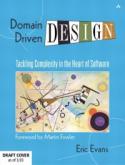
The software development community widely acknowledges that domain modeling is central to software design. Through domain models, software developers are able to express rich functionality and translate it into a software implementation that truly serves the needs of its users. But despite its obvious importance, there are few practical resources that explain how to incorporate effective domain modeling into the software development process.
Domain-Driven Design fills that need. This is not a book about specific technologies. It offers readers a systematic approach to domain-driven design, presenting an extensive set of design best practices, experience-based techniques, and fundamental principles that facilitate the development of software projects facing complex domains. Intertwining design and development practice, this book incorporates numerous examples based on actual projects to illustrate the application of domain-driven design to real-world software development.
Readers learn how to use a domain model to make a complex development effort more focused and dynamic. A core of best practices and standard patterns provides a common language for the development team. A shift in emphasis--refactoring not just the code but the model underlying the code--in combination with the frequent iterations of Agile development leads to deeper insight into domains and enhanced communication between domain expert and programmer. Domain-Driven Design then builds on this foundation, and addresses modeling and design for complex systems and larger organizations.Specific topics covered include:
With this book in hand, object-oriented developers, system analysts, and designers will have the guidance they need to organize and focus their work, create rich and useful domain models, and leverage those models into quality, long-lasting software implementations.
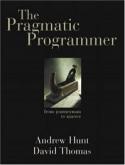



Beck collects 77 patterns for handling everyday programming tasks and writing more readable code. This new collection of patterns addresses many aspects of development, including class, state, behavior, method, collections, frameworks, and more. He uses diagrams, stories, examples, and essays to engage the reader as he illuminates the patterns. You’ll find proven solutions for handling everything from naming variables to checking exceptions.
This book covers

The practice of enterprise application development has benefited from the emergence of many new enabling technologies. Multi-tiered object-oriented platforms, such as Java and .NET, have become commonplace. These new tools and technologies are capable of building powerful applications, but they are not easily implemented. Common failures in enterprise applications often occur because their developers do not understand the architectural lessons that experienced object developers have learned.
Patterns of Enterprise Application Architecture is written in direct response to the stiff challenges that face enterprise application developers. The author, noted object-oriented designer Martin Fowler, noticed that despite changes in technology--from Smalltalk to CORBA to Java to .NET--the same basic design ideas can be adapted and applied to solve common problems. With the help of an expert group of contributors, Martin distills over forty recurring solutions into patterns. The result is an indispensable handbook of solutions that are applicable to any enterprise application platform.
This book is actually two books in one. The first section is a short tutorial on developing enterprise applications, which you can read from start to finish to understand the scope of the book's lessons. The next section, the bulk of the book, is a detailed reference to the patterns themselves. Each pattern provides usage and implementation information, as well as detailed code examples in Java or C#. The entire book is also richly illustrated with UML diagrams to further explain the concepts.
Armed with this book, you will have the knowledge necessary to make important architectural decisions about building an enterprise application and the proven patterns for use when building them.
The topics covered include:
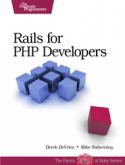
As a PHP developer, you have some great tools for developing web applications. Ruby on Rails is another key tool to add to your web development toolbox. Rails is a high-level web development framework that emphasizes high productivity and clean code. However, the Ruby language and Rails framework take a different approach from the way many PHP developers write applications.
Ruby lies at the foundation of Rails, and we’ll teach you the Ruby language from the beginning by building on your existing foundation of PHP. We’ll explore Ruby through parallel code examples that illustrate the differences between the languages, and help you understand the Ruby idioms and how they differ from popular PHP code and style.
You’ll then learn the Rails framework by iteratively building a complete application, starting from the home page through to a finished product. Along the way, you’ll build your skills as a Rails developer by learning the Rails fundamentals such as MVC structure, domain modeling, and testing.
In addition to serving as a guide to learning both Ruby and Rails from a PHP developer’s perspective, this book includes two extensive reference chapters. They map the most common PHP tasks to their equivalents in the Ruby and Rails world, giving you at-a-glance information that you’ll refer to often.
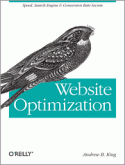
Is your site easy to find, simple to navigate, and enticing enough to convert prospects into buyers? Website Optimization shows you how. It reveals a comprehensive set of techniques to improve your site's performance by boosting search engine visibility for more traffic, increasing conversion rates to maximize leads and profits, revving up site speed to retain users, and measuring your site's effectiveness (before and after these changes) with best-practice metrics and tools.
Remember when an optimized website was one that merely didn't take all day to appear? Times have changed. Today, website optimization can spell the difference between enterprise success and failure, and it takes a lot more know-how to achieve success.This book is a comprehensive guide to the tips, techniques, secrets, standards, and methods of website optimization. From increasing site traffic to maximizing leads, from revving up responsiveness to increasing navigability, from prospect retention to closing more sales, the world of 21st century website optimization is explored, exemplified and explained.
Website Optimization combines the disciplines of online marketing and site performance tuning to attain the competitive advantage necessary on today's Web. You'll learn how to improve your online marketing with effective paid and natural search engine visibility strategies, strengthened lead creation and conversion to sales methods, and gold-standard ad copywriting guidelines. Plus, your increased site speed, reduced download footprint, improved reliability, and improved navigability will work synergistically with those marketing methods to optimize your site's total effectiveness.
In this book for business and IT managers, author Andrew King, president of Website Optimization, LLC, has assembled experts in several key specialties to teach you:
Website Optimization not only provides you with a strategy for success, it also offers specific techniques for you and your staff to follow. A profitable website needs to be well designed, current, highly responsive, and optimally persuasive if you're to attract prospects, convert them to buyers, and get them to come back for more. This book describes precisely what you need to accomplish to achieve all of those goals.
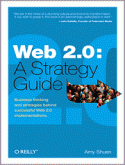
Web 2.0 makes headlines, but how does it make
money? This concise guide explains what's different about Web 2.0 and
how those differences can improve the bottom line. Whether you're an
executive, a small business owner, or an entrepreneur, Web 2.0: A Strategy Guide
illustrates through real life examples how various businesses are
creating new opportunities on today's Web. This book is about strategy
rather than the technology itself.Web 2.0 makes headlines, but how
does it make money? This concise guide explains what's different about
Web 2.0 and how those differences can improve your company's bottom
line. Whether you're an executive plotting the next move, a small
business owner looking to expand, or an entrepreneur planning a
startup, Web 2.0: A Strategy Guide illustrates through real-life examples how businesses, large and small, are creating new opportunities on today's Web.This book is about strategy. Rather than focus on the technology, the
examples concentrate on its effect. You will learn that creating a Web
2.0 business, or integrating Web 2.0 strategies with your existing
business, means creating places online where people like to come
together to share what they think, see, and do. When people come
together over the Web, the result can be much more than the sum of the
parts. The customers themselves help build the site, as old-fashioned
"word of mouth" becomes hypergrowth.